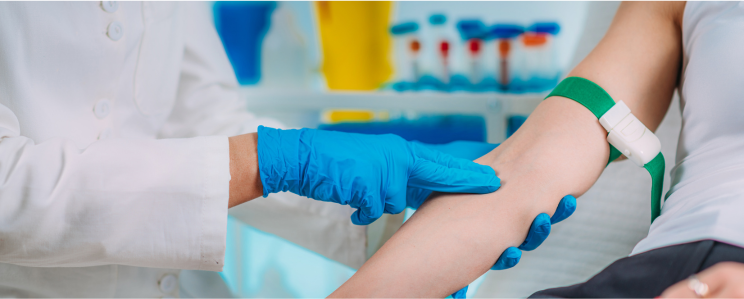Northeast Medical Institute - New Haven Campus Phlebotomy Course & Cna Class Fundamentals Explained
Northeast Medical Institute - New Haven Campus Phlebotomy Course & Cna Class Fundamentals Explained
Blog Article
The smart Trick of Northeast Medical Institute - New Haven Campus Phlebotomy Course & Cna Class That Nobody is Talking About
Table of ContentsThe Best Strategy To Use For Northeast Medical Institute - New Haven Campus Phlebotomy Course & Cna ClassNortheast Medical Institute - New Haven Campus Phlebotomy Course & Cna Class Can Be Fun For AnyoneSome Of Northeast Medical Institute - New Haven Campus Phlebotomy Course & Cna ClassHow Northeast Medical Institute - New Haven Campus Phlebotomy Course & Cna Class can Save You Time, Stress, and Money.Northeast Medical Institute - New Haven Campus Phlebotomy Course & Cna Class Things To Know Before You Get ThisSome Known Details About Northeast Medical Institute - New Haven Campus Phlebotomy Course & Cna Class
The use of such tools ought to be come with by other infection avoidance and control techniques, and training in their use. Not all security tools apply to phlebotomy. Prior to selecting a safety-engineered device, users must completely explore available tools to determine their appropriate use, compatibility with existing phlebotomy methods, and efficacy in protecting team and people (12, 33).For settings with low resources, cost is a motoring variable in procurement of safety-engineered tools. Where safety-engineered tools are not readily available, proficient use of a needle and syringe is appropriate.
Among the necessary pens of high quality of care in phlebotomy is the involvement and cooperation of the individual; this is equally helpful to both the health worker and the individual. Clear information either created or spoken must be offered to every person who undertakes phlebotomy. Annex F supplies sample message for explaining the blood-sampling treatment to a client. In the blood-sampling room for an outpatient division or clinic, supply a comfy reclining couch with an arm rest.
The 5-Second Trick For Northeast Medical Institute - New Haven Campus Phlebotomy Course & Cna Class
Make certain that the indicators for blood tasting are plainly specified, either in a written protocol or in documented guidelines (e.g. in a lab kind). Accumulate all the equipment required for the treatment and place it within risk-free and very easy reach on a tray or cart, making sure that all the items are plainly noticeable.
Present yourself to the client, and ask the individual to specify their full name. Inspect that the laboratory form matches the person's identification (i.e. match the person's details with the research laboratory kind, to guarantee accurate recognition).
Make the individual comfortable in a supine position (ideally). Area a tidy paper or towel under the person's arm. Discuss the test to be executed (see Annex F) and obtain verbal permission. The person has a right to refuse an examination at any type of time before the blood sampling, so it is necessary to make certain that the person has understood the procedure.
Little Known Questions About Northeast Medical Institute - New Haven Campus Phlebotomy Course & Cna Class.
Expand the individual's arm and evaluate the antecubital fossa or lower arm. Locate a blood vessel of a good size that is visible, straight and clear.
DO NOT put the needle where blood vessels are drawing away, since this boosts the chance of a haematoma. Finding the capillary will certainly help in establishing the proper dimension of needle.
Haemolysis, contamination and visibility of intravenous liquid and medicine can all modify the results (39. Nursing staff and medical professionals might access main venous lines for samplings following protocols. Samplings from central lines bring a risk of contamination or wrong research laboratory test results. It is acceptable, however not perfect, to injure specimens when initial introducing an in-dwelling venous device, before linking the cannula to the intravenous fluids.
Some Known Questions About Northeast Medical Institute - New Haven Campus Phlebotomy Course & Cna Class.
Allow the area to completely dry. Failing to permit enough get in touch with time raises the threat of contamination. DO NOT touch the cleansed site; particularly, DO NOT place a finger over the vein to direct the shaft of the revealed needle. It the site is touched, repeat the disinfection. Do venepuncture as complies with.
Ask the client to form a hand so the veins are more famous. Go into the vein promptly at a 30 degree angle or less, and remain to introduce the needle along the vein at the most convenient angle of entry - CNA Classes. As soon as adequate blood has actually been collected, release the tourniquet prior to withdrawing the needle
Northeast Medical Institute - New Haven Campus Phlebotomy Course & Cna Class Things To Know Before You Get This
Take out the needle gently and apply gentle stress to the website with a clean gauze or dry cotton-wool round. Ask the individual to hold the gauze or cotton woollen in location, with the arm prolonged and elevated. Ask the individual NOT to flex the arm, because doing so causes a haematoma.

About Northeast Medical Institute - New Haven Campus Phlebotomy Course & Cna Class
Where possible, maintain the tubes in a shelf and move the shelf towards you - https://www.ted.com/profiles/47186180. If the sample tube does not have a rubber stopper, inject very gradually right into the tube as decreasing the pressure and rate utilized to move the sampling decreases the risk of haemolysis.

Report this page